In this review we will take a look at Makita’s 18V X2 36V LXT Brushless Blower XBU02Z. This is the second in a series of Makita X2 OPE reviews that started with the X2 string trimmer XRU09PT and will be followed by the X2 Brushless 14″ Chainsaw XCU03PT.
Makita is no stranger to outdoor power equipment with extensive coverage in gasoline, electric and battery powered lawn tools. Battery powered OPE has been very popular in recent years and this trend will continue to grow as users move away from gas powered units to battery powered units. Earlier battery powered OPE from several years ago were low on power and runtime but with many improvements in battery capacity and brushless motors many battery powered tools can now compete head to head with gasoline tools. Makita also pioneered the use of using two battery packs together to double voltage with their X2 line which gives 18V users the opportunity to tap into 36 volt performance. Yes all Makita X2 power tools are actually 36 volt machines but while giving you the flexibility of using their popular 18V batteries. This means users can get more performance without having to switch to a different battery platform. As with all Makita X2 power tools, even though they are actually 36 volt tools, they are still part of the 18 volt family since they use 18V batteries but two at a time to achieve the extra performance.
Battery Powered OPE Pros and Cons
What’s great about battery powered OPE (from any brand) is that unlike gasoline engine equipment you don’t need to buy and refill gasoline, you don’t have to mix oil, no tune ups, no fumes, no priming and no pulling strings. Battery powered tools are ready to go at all times with a freshly charged battery, they have push button starting and are generally quieter than their gasoline engine counterparts. The downsides of battery powered tools are that they are generally more expensive than gas powered tools however their prices have come down a lot over the years and are more affordable than ever. Replacement batteries can be expensive but they have long lifespans. When a battery runs out of juice it means the work is over even if the job is not done until the battery charges fully again however you can continue working if you have extra batteries on hand.
Ethic’s Disclosure:
Makita was kind enough to provide the X2 Brushless String Trimmer XRU09, X2 Brushless Blower XBU02Z, and X2 Brushless 14″ Chainsaw XCU03PT at no cost for review. However as with all my reviews, I am not paid, sponsored, or obligated to give a positive review. This review is my opinion of the product based on my usage and knowledge and my review will reflect what I like and dislike about the said product. I will do my best to provide you with an unbiased review.
Features and Specs:
Before we get into the performance section of this review, lets first take a look at the Makita XBU02Z 18V X2 36V LXT Brushless Blower’s features and specifications list as well as my opinion on them.
- 473 CFM
Being a 36 volt tool this Makita X2 leaf blower gets a performance bump from their regular 18V blowers and the brushless motor also helps achieve extra power over the original X2 blower which only had 155 CFM at 208 MPH. The new X2 brushless blower doesn’t have the same high 208 MPH of the original but what it lacks in speed it makes up in volume at 473 CFM and still has a strong air speed of 120 MPH. With these specs, it makes it stronger than any 18V blower on the market today at the time of writing. Of course I’ll go into detail of how it performs in real life but more on that below in the performance section. With performance stats like this it catches up to higher voltage blowers on the market from the likes of Ego and Echo from a few years back although today’s latest blowers from the 56V+ market have far surpassed these numbers. Ego’s and Echo’s latest blower models both put out 580cfm/168mph and 550cfm/145mph respectively. That makes sense that those models have better performance stats since they are higher voltage tools. On the other end of the spectrum in the 18V world Dewalt’s and Milwaukee’s 18V blowers puts out 400cfm/90mph and 450cfm/110mph respectively and as we can see, Makita’s X2 brushless blower is a nice upgrade over those model. So Makita’s X2 brushless blower fits nicely between 18V and 56-60V blowers from the competition. Looking at it’s direct competition from similar voltage tools we can take a look at Dewalt’s 40v brushless blower which offers 400cfm at 120mph. The MPH is the same but here we see that Makita’s X2 blower beats the Dewalt 40v with a nice upgrade in CFM’s.
Looking at it’s physical features, the X2 blower has a everything you can ask for in a blower in terms of controls. It has a variable speed trigger which is very responsive by the way and makes choosing just the right speed you want very simple. It also has a lock on knob for cruise control to lock the trigger in the on position for long sessions so it doesn’t tire your finger out from constantly holding. A variable speed trigger and cruise control lock would be good enough but they also included a nice variable speed dial that limits the top end range of the trigger. A very nice feature to have and has that same premium feel of their cordless 18V multitool I reviewed years back. Milwaukee’s second gen M18 Fuel blower has a two speed selector which is a great feature in my opinion however Makita’s variable speed dial gives their blower even greater flexibility when choosing speed. Basically any speed setting selected on the variable speed dial acts as a speed and you definitely have more than 2 like on Milwaukee’s model so in essence you can have as many speeds as you want on Makita’s X2 brushless blower. A feature I’m glad this model lacks is that annoying on/off button found on the X2 string trimmer and X2 brushless chainsaw. Because of this the blower is ready to run at all times with a simple press of the trigger. If you like to store tools by hanging them on your wall, be glad to know that this blower has a keyhole slot for wall mounting.
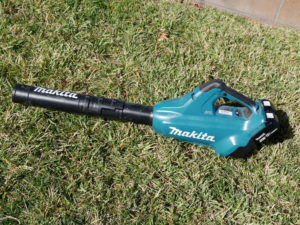 Like all the other cordless leaf blowers I’ve tried in the past, this one also has a detachable blower tube that needs to be installed before use. Once it’s on you don’t ever need to remove it again but you have that option if needed. What’s interesting about the one on this blower is that it’s a two piece tube. You can use it with just one piece and the other works as an extension however using only one tube makes it seem too short in my opinion. I find it better to use with both sections installed for a more “regular” length. What’s also neat about the two piece tube is that they are designed so you can choose different lengths when using both together to better suit your needs depending on how close you want the tip to be to the ground.
Like all the other cordless leaf blowers I’ve tried in the past, this one also has a detachable blower tube that needs to be installed before use. Once it’s on you don’t ever need to remove it again but you have that option if needed. What’s interesting about the one on this blower is that it’s a two piece tube. You can use it with just one piece and the other works as an extension however using only one tube makes it seem too short in my opinion. I find it better to use with both sections installed for a more “regular” length. What’s also neat about the two piece tube is that they are designed so you can choose different lengths when using both together to better suit your needs depending on how close you want the tip to be to the ground.
For the longest time, Makita was stubborn to update their batteries with built in fuel gauges and even though all their new batteries now include fuel gauges built in, this tool has a built in double fuel gauge to check remaining battery charge for each battery which is good for those still running old packs without fuel gauges. Since this tool uses two 18V batteries together to operate, and yes they must both be installed to run, it would become a hassle to have to charge two batteries separately. It would but if you buy this tool as a kit it comes with a dual charger that charges both batteries at a time so you wont have to hassle with charging them separately. The dual charger is just as fast as all other Makita chargers and it charges both 5.0 ah batteries in 45 minutes which is pretty fast.
Pricing VS the competition
As far as pricing is concerned, Makita’s X2 brushless blower is priced at $219 as a baretool and $329 as a kit with two 5.0 ah batteries and double charger. As was the case with their X2 string trimmer, the X2 blower is also considerably more expensive than it’s competition. You can get better spec’d blowers as complete battery and charger kit’s for less than the price of Makita’s blower as a baretool. For example you can get Ego’s 56V blower (LB5302 model with 530cfm/110mph) with 2.5ah battery and charger as a kit for only $199 which is $20 less than Makita’s blower without a battery and charger. Makita treats the pricing of this blower as if it was another power tool and that would be fine but when you factor in the fact and reality that better spec’d and higher voltage blowers from other brands can be had for less than this blower’s price as a baretool or kit, it just doesn’t make sense from a budget standpoint. You might think to yourself: “well the Ego is cheaper because it comes with one smaller 2.5 ah battery while the Makita comes with two larger 5.0 ah batteries. That’s why the Makita is more expensive because it comes bundled with more batteries.” That might make sense but 56V batteries use more cells than 18V batteries and can actually be larger in capacity than 18V batteries. To figure this out we have to look at watt hours which is the universal way to compare batteries of any given voltage and amp hour rating. The watt hour formula is simple, you simply multiply the voltage by the amp hours to get watt hours (V x Ah = wh). So an Ego 56 volt 2.5 ah battery is 140 wh while a single Makita 18v 5.0 ah battery is 90 wh. This means that one Makita 18V 5.0 is in fact smaller than a 56V 2.5 ah battery by 50 less watt hours. But since Makita’s X2 blower comes with two batteries, it makes the total combined watt hours 180 wh. Having more watt hours than it’s competition would justify a price increase yes but having only 40 wh total more doesn’t justify a $130 price increase as a kit in my opinion. In fact Ego has a 56v blower kit with their latest blower model LB5804 with 580cfm/168mph with a 5.0ah battery and charger for $299. It’s still less than Makita’s X2 brushless blower kit priced at $329 and Ego’s 5.o ah battery has a total of 280 wh which is more than 50% the watt hour capacity of two Makita 5.0 ah batteries.
I also want to mention that at the time of writing Makita was offering deal offers for this blower as a kit for the same full price of $329 but you get a choice of either an extra set of two 5.0 ah batteries OR an extra cordless 18V brushless angle grinder. I’d say that this is definitely the way to go if you are considering this X2 blower and only then does the value proposition of this tool become similar to other brands and actually become competitive in terms of pricing.
Performance
I recently tried out the 1st gen Milwaukee M18 Fuel blower (450cfm/100mph) and it was the strongest performing 18V I’ve tried and was very capable but it just didn’t have the grunt like the 2nd gen Ego 56V blower I’ve been using regularly. The Makita X2 brushless blower while not having the same highend stats as the Ego 2nd gen blower, it’s certainly a lot closer in performance thanks to it being a 36 volt tool. I felt more confident with it’s performance at blowing leaves on grass which although the Milwaukee can do, the M18 doesn’t excel in this regard. So the Makita is definitely a pleasing experience to use with it’s high performance and I liked it’s variable speed trigger as it was very responsive and made it easy to tone down the power when full blast wasn’t needed.
Compared directly to the 2nd gen Ego 56V blower I’ve been using for so long, performance is easily stronger on the Ego at full blast. However to get full power you need to use the turbo button to achieve that speed. Nothing wrong with that but I prefer a variable speed trigger which the Makita has and the Ego lacks. The Ego lacks a variable speed trigger but instead uses a knob for variable speed use. It works but it’s on the front and out of reach from the hand that is gripping the tool. Everything needed to operate the Makita X2 blower is within fingers reach and easy to access. I also want to mention that Ego fixed the weird control scheme on later models. Although highend performance of the Makita X2 blower isn’t as close to higher voltage blowers like Ego’s for example, I believe it’s close enough to be very effective at everyday use. More so than the Milwaukee 1st gen Fuel blower.
Handling
Next on the list is weight and the Makita’s X2 brushless blower tops in at 9.9 lbs with batteries installed. I complained about Milwaukee’s 1st gen 18V Fuel blower being a bit heavy for extended use with it’s 8.1 lbs weight but even though the Makita is heavier it is better balanced because it’s not front heavy. That plus it’s stronger performance means you get done quicker and as a result I didn’t feel I was as tired from use as Milwaukee’s. I also want to say that Milwaukee made their 2nd gen M18 Fuel blower almost a pound lighter and with slightly better performance.
Runtime
As far as runtime is concerned, I was able to achieve a total runtime of 22 minutes and 9 seconds. This was achieved with all variable speed use with about 40 percent of use at full blast. Your mileage will vary depending on speeds settings used but hopefully my runtime figure will be of help to you. You can of course expect longer runtime if you dont go full blast as much as I did and you can get lower runtimes if you use full blast more than I did. I also want to mention that I only count time while the tool is running and not the breaks in between use so as to give you the most accurate runtime figures possible.
Compared to other blowers I’ve tried, the Milwaukee 1st gen M18 Fuel blower achieved 30 minutes and 42 seconds under my runtime test and most of that was using full blast. Dewalt’s 20V blower achieved 23 minutes all at full speed. Ego’s 2nd gen 56v blower go 19 minutes while mostly full blast. My analysis is that Makita’s brushless blower gets slightly worse runtime than the other two models mentioned. I believe it is because it’s more powerful than the two 18v blowers mentioned and more performance eats up batteries faster however compared to the 56V blower, it seems Makita’s is just not as efficient in this regard.
I’d say runtime is good enough and in my use gets my front and back yard done with enough battery left to go for another round.
Conclusion
Pros
- Nice combination of performance and features
- 473CFM / 120mph very effective strong blowing performance
- well balanced not front heavy
- variable speed trigger, cruise control, and multiple speed dial
- double battery fuel gauge
Cons
- premium price makes it overpriced compared to the competition
Overall this blower is a blast to use. I like it’s strong effective blowing performance and not only excels in blowing leaves and debris on hard surfaces but is very effective and strong when pushing leaves on grass. Although not quite as strong as highend blower performance from the higher voltage crowd, it’s easily much stronger than the strongest of 18V blowers. Although heavy at close to 10lbs it is well balanced with it not being front heavy and it’s strong performance means you’ll get done sooner before you tire out than it’s 18v competition. My only gripe has to do with it’s high price tag which makes no sense when higher voltage blowers not only cost a lot less, they perform better too. However Makita every so often runs deals on this blower as a kit with extra goodies such as an extra set of batteries OR an extra grinder which makes it a good value when these offers are available.
![]()
Free 2 day shipping – Try Amazon Prime 30-Day Free Trial
DISCLOSURE:
Tool Craze does not sell this product or any product on the Tool Craze website. Tool Craze does not handle the sale of any item in any way. If you purchase something through a post on the Tool Craze site, Tool Craze may get a small share of the sale. Please refer to the About section for more info.

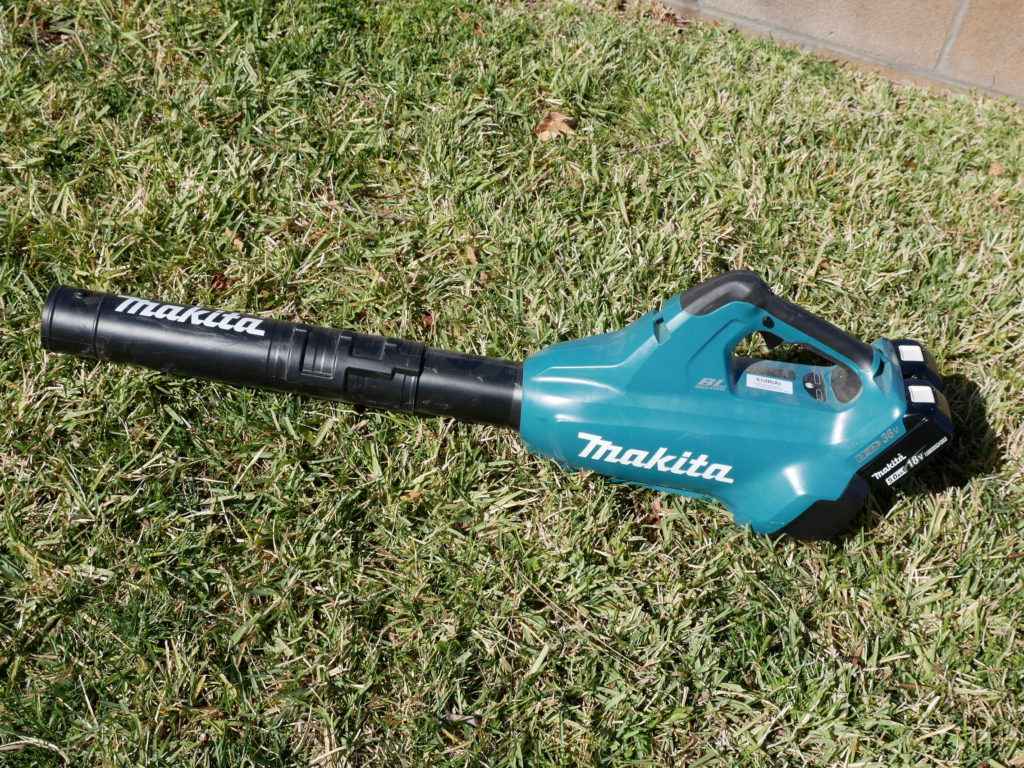
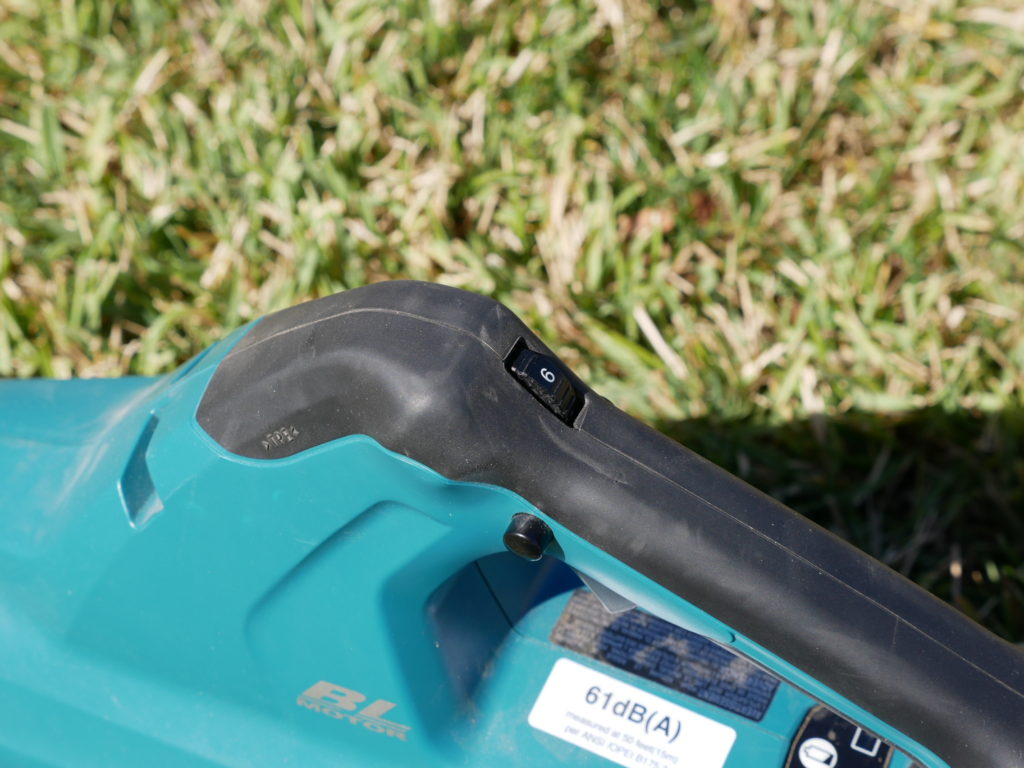
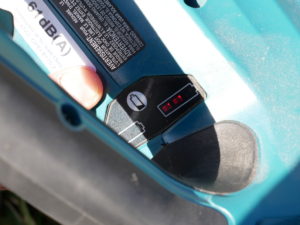
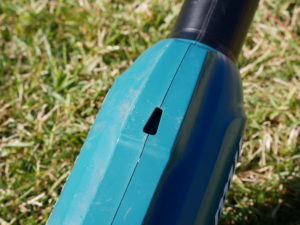
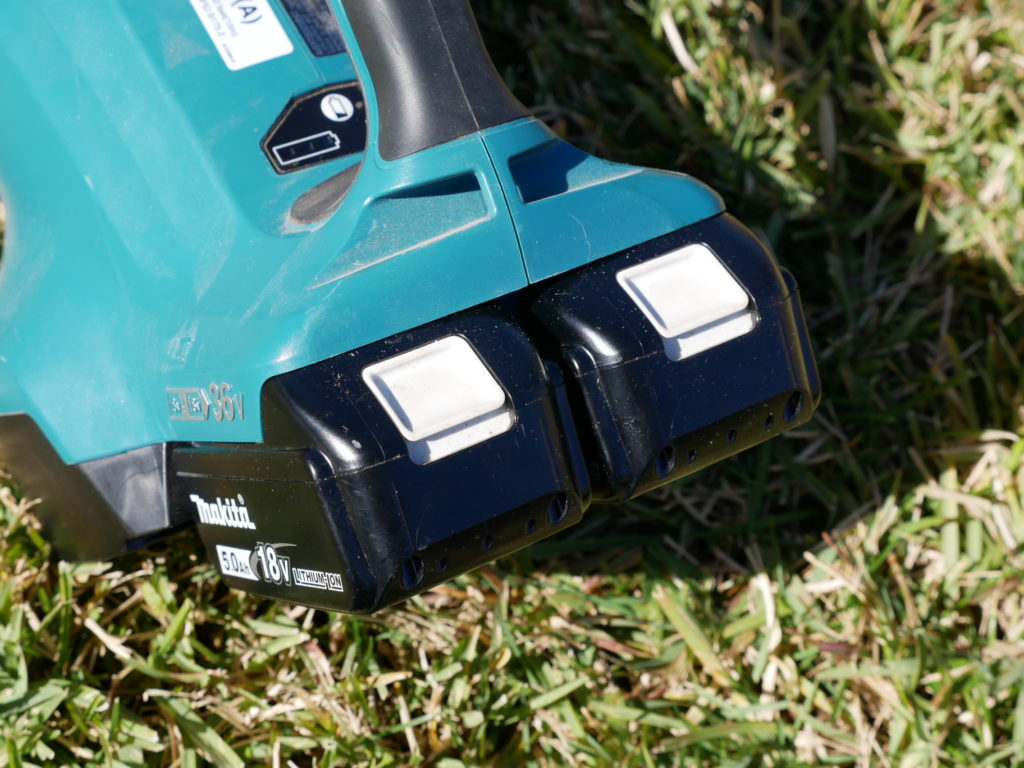
Leave a Comment